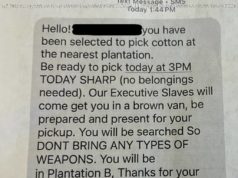FORT HANCOCK, Texas (AP) – Donald Trump didn’t carry many parts of Texas’ heavily Democratic areas along the border with Mexico, but he won remote Hudspeth…
FORT HANCOCK, Texas (AP) – Donald Trump didn’t carry many parts of Texas’ heavily Democratic areas along the border with Mexico, but he won remote Hudspeth County thanks to people like Terry Rose. And the 71-year-old mechanic saw the longest shutdown in U. S. history as a campaign promise kept.
“I want less government. That’s what we’re getting,” said Rose, who was having lunch with a group of friends in Fort Hancock, an enclave with fields of cotton, alfalfa and chili peppers just across the border from El Porvenir, Mexico. “I’m understanding about federal employees, but if you’re ‘non-essential’ it’s hard to feel too badly for you.”
The shutdown – which lasted 35 days and ended Friday with Trump agreeing to fund the government for three weeks – did dramatically shrink the size of government at least temporarily. Funding was cut off for nine of the 15 Cabinet-level departments and about 800,000 employees went without pay, nearly half of whom were deemed non-essential and told not to report to work.
Even as it eroded the president’s approval rating, the shutdown energized a segment of the Republican base that has for decades heard GOP presidential hopefuls vow to abolish the IRS and mothball the departments of Education, Energy or Interior or many other agencies, without actually accomplishing anything close. It’s a reminder that should Trump choose a shutdown again, as he threatened Friday, he is likely to have some supporters cheering him on.
But the shutdown didn’t repair a decades-long schism within the Republican Party between conservatives, who would like to see some parts of government contract but don’t mind creating deficits for things like tax cuts and defense spending, and libertarians, whose main goal is to get government out of peoples’ lives almost entirely.






